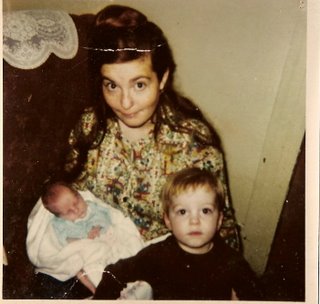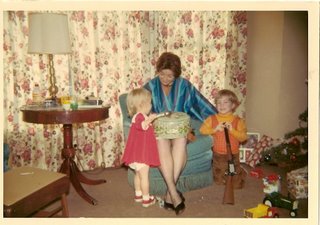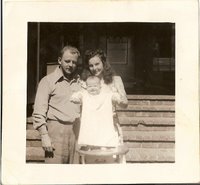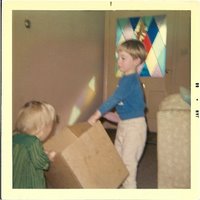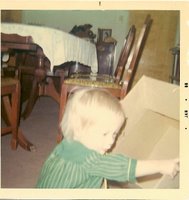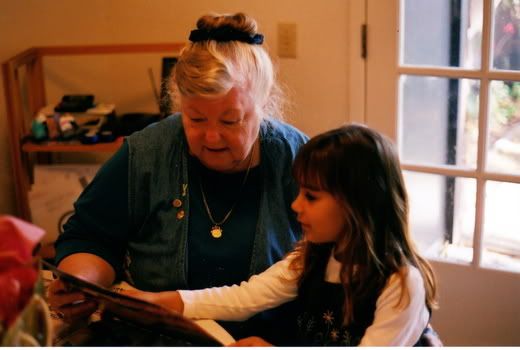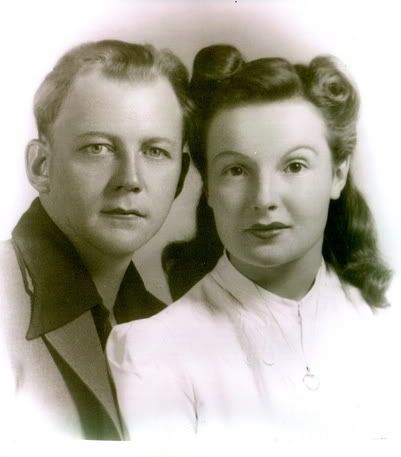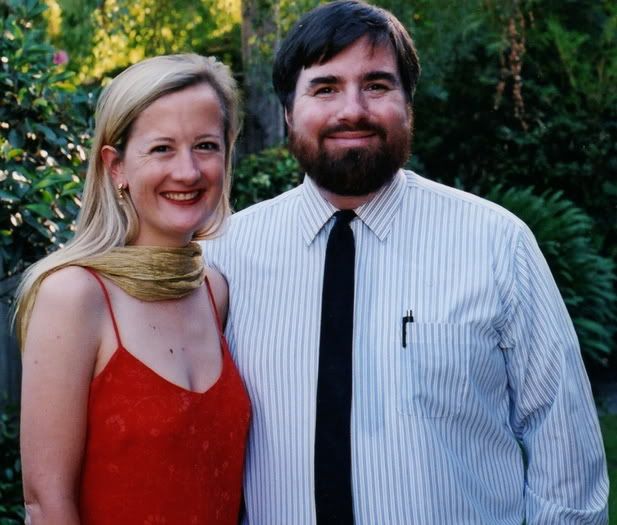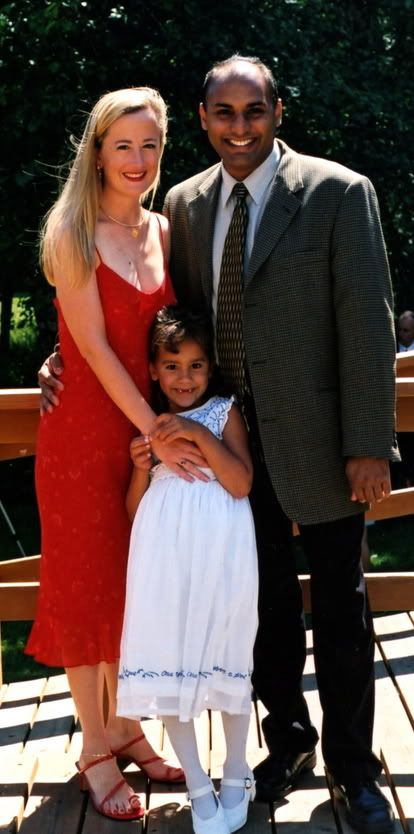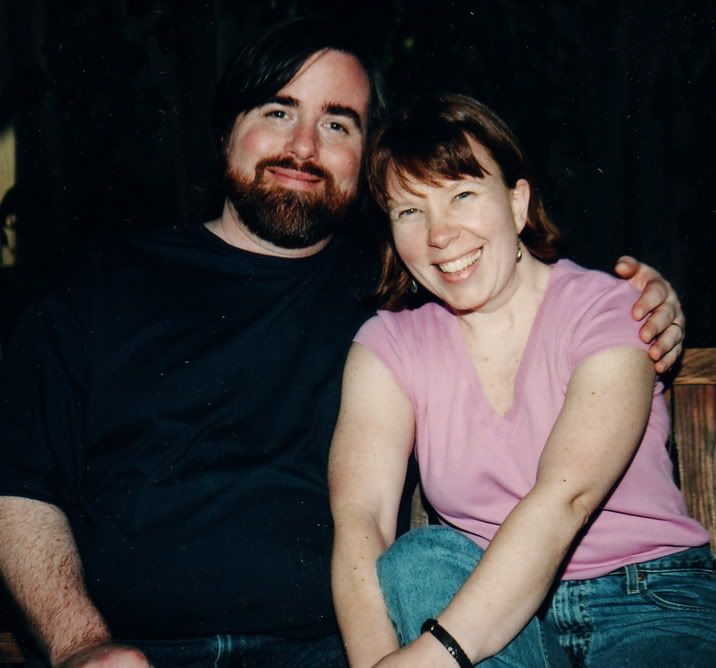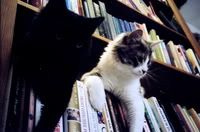I haven't told you yet, but I love clothes. They tell others who we are and remind us of who we used to be. We look at pictures of the past and are reminded of how the world used to be for us and other foremothers and forefathers.
The world used to be more restricted for females. Women and little girls both wore dresses that buttoned up the back. Not only were they hard to climb and tumble in while maintaining modesty, but we needed help getting dressed. It meant we were more dependent than boys. (Of course, things had come a long way from the days when rich women were sewn into their clothing each morning and your maid could tell by the stitches if you'd been out of them that day. And the maid was paid by the husband, not the wife.)
When my father was a little boy, shoes had to be buttoned up by putting a buttonhook through the button hole in the stiff leather and pulling the button through. This was not an easy thing for a child to do, and young children couldn't do it at all. If my father took off his shoes, his mother had to button them back on him. Do that a number of times a day and a busy mother runs out of patience. So, even today there are children who get in trouble for taking off the shoes that now fasten with velcro.
Elastic waists and velcro and zippers have freed children and their mothers. Wash and wear has eased the tension between mothers and children immensely. Universal wearing of jeans has given girls freedom we never had before.
Since clothes make such a difference, I have decided to do a series on clothes I have worn. I will take one example at a time -- otherwise the post would be too long. So, for today we will take this introduction and my first item of memory, the little white dress I wore at the age of three.
1945
I Always Wore White
When I was a little girl, there were no modern fabrics, certainly not wash and wear. It was during and just after WWII and factory production was all for the war effort, so although my father was making good money working in the ship yards, no washing machines were to be had and my mother had to do the wash on a scrub board. She always dressed me in white. Many of my dresses had eyelet or lace on them. Just the sort of thing to get dirty or torn easily. And I was not a clean child. I was up trees and down holes and through pipes and into everything. Torn lace and dirty bodices were my standard expression. (The reason my hair is done in Shirley Temple ringlets is that I was born on her birthday. Shirley, Shakespeare, and me. So, now you understand.)

And the worst of it was when we went to visit my Grandmother Hunt in the fall and the pomegranates were ripe. I think Grandma had around ten pomegranate trees. To this day, I can't resist pomegranates. Picture me, three years old, in my little white dress, hiding under the tree and eating pomegranates. Even with modern washing products, there is no getting that juice out of white cotton. Now picture my mother trying to scrub those stains out of my dresses on the board. Now picture me being scolded. And now, knowing me, first picture me with newspaper tucked into my collar trying to protect my dress that way. Do you see the newsprint on my dress along with the purple juice? Then picture me, naked as the day I was born, eating the fruit, getting juice all over my body, and then picking up my clothes with my hands still wet and leaving purple handprints all over them.
Finally, picture me, purple stained from stem to stern, trying to figure out how my mother knew that I had been sneaking pomegranates.
1948
School Uniform
This is a middy blouse. Mine was worn with a navy blue tie and a navy blue pleated skirt. It was my uniform at St. Mary of The Palms School for Girls, in Mission San Jose, California. It was a boarding school. I attended St. Mary's after my father died, although we were not Catholic. Some day I'll have to tell you how hearing that all non-Catholics go to hell makes a little girl with a dead father feel.
When we lived in Puerto Rico, because they didn't speak English in the public schools in 1952, I attended a Catholic day school and wore a uniform much like this. I think the skirt was green. I think that middy blouses and pleated skirts were fairly standard for Catholic school uniforms in those days.
1956
Squaw Dress

This is an example of the sort of thing I wore to school when I lived in El Paso, Texas and in Roswell, New Mexico. Lots of ric-rac. Our mothers had silver concho belts to wear with theirs, and sometimes there was turquoise inset into the belt.
Squaw dresses came in solid colors, like this one, or with alternating colors, so that the top and second gore were one color and the first and third gores were another. We tended towards combinations like turquoise or pink and grey or green and brown. We could choose the colors we wanted, because our mothers made all of our clothes. Black and white was a particularly dramatic contrast and I made myself one eventually. The only reason I could wear it without washing out was that I was so young -- I'm not the right coloring for black and white. I loved it.
1956
Full Petticoats & Circle Skirts
In Roswell, in addition to squaw dresses, we also wore full petticoats and circle skirts. You may have seen pictures of poodle skirts, and there were some with poodles, but most were poodle free. I had one with my name embroidered on it. And one in light gray with a dark gray patch pocket and one in purple with lilac flowers at the hem. Again, my mother made them all.

Under the skirt, we wore anywhere from two to six petticoats. We soaked them in starch and/or sugar, so that they stood out quite far. Since we could never decide which made them stand out farther, we often soaked them in both. Two girls were about the limit to walk side by side in the halls at school or on a sidewalk. We would have been in real trouble had there been a fire.
These things took a lot of care, from soaking of petticoats to walking abreast to sitting with modesty. The fashion didn't last long, which was just as well. It was really training for being the kind of woman that society wanted in those days -- willing to do whatever was necessary to look good.
1956 - 1962
Pleated Skirts & Sweater Sets
High school and the first two years of college found me in pleated skirts and sweater sets. The sweaters were the same color, a cardigan worn over a shell. You could also wear the cardigan with a blouse and the shell alone or with a jacket. Having a plaid skirt with four colors in it and then a sweater set in each of those colors was the goal. I did the first two years of high school at Hillsdale High in San Mateo, California and the last two at Thomas Downey High in Modesto. College was the University of California at Berkeley. My mother thought, when I went away to college, that I would come home with polish. Maybe wearing a circle pin.
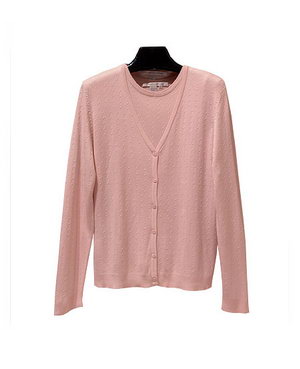
The only problem with this plan was that I arrived at Berkeley during the beginning of the student movement. I may have dressed like I was on my way to stereotypic adult womanhood, but it wasn't to be. The combination of who I was and where and when I was quickly derailed that plan. Anyway, this is what I mostly wore when I was majoring in anthropology and my mother still had hopes.
1960
Sandals & Shirtmakers
The fact that within two months of hitting Berkeley I went to Sandals Unlimited and had a pair of these custom made did give her pause. Well, to truly understand my mother's concern you have to know that these are really the ones I had.
Wide leather and tied just above the knee. Most comfortable pair of shoes I ever owned in my life and I wore them almost exclusively for at least 15 years. To this day I am one of the few women my age without bunions or other misshapen conditions of the foot, because while I was being a hippy and wearing sandals that had been cut to the pattern of my feet and then soaked and worn until they dried to an exact conformation, most women were wearing high heels with needle points. Had I been more pliable, more accepting of my fate as a woman, I too could have been half crippled by my shoes.

The other thing I wore in high school and college was shirtmaker dresses. I loved them. They had such freedom -- as easy to wear as a man's shirt, looked good. My favorite I got my junior year of high school and wore at least weekly through my sophomore year of college. My roommate wore it to a Halloween party and everyone knew she had come as me. By college, I had begun to find some sense of a different style and these I usually wore with the gladiator sandals and a four inch wide black leather belt. The buckle was a gate hinge. Smashing!

My freshman year at Berkeley I joined the staff of the Independent Californian, an underground newspaper formed when the Regents started censoring the Daily Californian for its coverage of the HUAC riots in San Francisco and the staff resigned and started their own paper. Here we see me getting radicalized even though I was still partially dressed like a proper young lady.
1960 - 1968
I Never Wore Tie Dye
I was a hippy. Started with my custom made sandals. And then, I let my hair grow for seven years and wore dark clothes. One outfit was a burlap skirt with a satin blouse. You should have seen my step-father's reaction to that one. Even better when I smoked my cherry wood pipe! He didn't want me to smoke it in the house, but if I went out on the porch the neighbors could see me. I would go back to Berkeley with my throat and mouth sore, and not touch the thing until I visited my parents again.
Lots of black and gray, charcoal and navy. Actually, I sort of came in on the end of the beatniks and the beginning of the hippies. See the madras bedspread used for a curtain and the wine skin hanging from the light pole. Smoked grass and some hash, ate peyote buttons, dropped out of college to live in an attic and write the great American novel (didn't do either), read my poetry at coffee houses, drank lattes before anyone else had heard of them, hung out with other young people who had artistic leanings, enjoyed myself completely. Stopped wearing the girdles all girls and women wore in those days. Considered moving to a commune. Lived in San Francisco near the Haight Ashbury.
Did sound effects for a friend who did radio plays. Went to museums and plays and concerts and book stores. Took part in some early protest marches. Attended three IWW spaghetti feeds, but that got too sad when there were 12 people there talking about how things were going to be after the revolution. When they didn't serve food, they pulled in the five faithful -- two of whom were rumored to be FBI agents.
One day Ken Kesey walked in as I was cooking for a group and ate what was supposed to be my breakfast. (By which I mean he not only ate the food I'd cooked for myself, but also the last food in the house.) His girlfriend read tarot. Another time I chased Neil Cassidy out of my house with a broom because he was putting the moves on my roommate, who was living with me while her husband was in jail.
1965 - 1968
Back to College
Julie was three weeks old and Richard two years and my divorce was still fresh when I returned to UC Berkeley. When I was registering, they tried to tell me that although I was 25, I needed my parents' permission to live off campus. I wasn't going for permission to do a damned thing, so I smiled and agreed that I would be glad to bring my baby and my toddler and live in campus housing. Amazing how suddenly I didn't need anyone's permission.
My Aunt Florence was newly widowed and returned to University of the Pacific at the same time. She had to get the dean's permission to live off campus although she was 43 and she only got it, as a single woman, because she owned a house within a mile of the campus. One day she was in the grocery store, wearing grey wool slacks and a white cotton blouse, and the dean of women came up to her and explained that if she was seen in town again in slacks she would be expelled. Mini-skirts would not have been allowed at UoP!
Mini Skirts
It's hard to believe that institutions had that much control of grown women, but they did. The mini-skirt felt like a rebellion against that, and although they were really sexy, many of us wore them as a badge of autonomy.
My favorite outfit was gray suede mini and vest and boots and hat (with a black feather) worn with black tights and turtle neck and three sets of silver chains. (Still have the chains. Still wear them with gray and/or black.) I looked like nothing so much as a mod Maid Marion, and would have done so even more if I had ever been able to afford the cape that completed the outfit. I think I identified very much with Mrs. Emma Peel when wearing a mini, and that was a good place to be while working free of the patriarchy.
1969 - Present
Pantsuits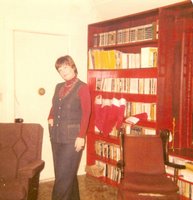
And then, life changed forever and much, much, much for the better. I moved to Fairbanks to teach in the local Montessori school, and stopped having to wear skirts. Alaska, because of the weather, was ahead of the Lower 48 in allowing women to wear pants to work. It was wonderful. I had skirts, I sometimes wore them, but rarely. Mostly it was pantsuits. The one pictured here was one of my favorites, gray that could be worn with any dark, intense color. Notice the three sets of chains that I bought to go with my gray mini and vest. I'm posing in the living room of the log house we lived in, which we called Antler Manor because there was a set of moose antlers above the front door, and it seemed nicer than calling it Horney Hall. Richard, Julie, and I shared the house with various roommates at various times, often another woman with a child.
Another good thing that happened with clothes, and happened very rapidly, was wash and wear. When we moved to Alaska we brought most of our clothes in suitcases, but the ironing came up by mover. The mover lost my belongings for six months, and when I finally got them, the only clothes my children owned that needed ironing were the ones in the shipment -- in six months, mothers had been freed of the iron unless they wanted to deal with it.

Pantsuits come in all sorts of styles and fabrics, good for summer as well as winter, or as in this case, for California as well as Alaska. By the time I had returned to California, in 1975, pants were being worn for work by many women there as well. Things had really changed in the five years we lived in Fairbanks. I was walking uphill on the UoP campus, the same UoP that had threatened to expel my aunt for wearing a pair of dress slacks to the grocery store just six years earlier, and there on the grass was laying a young woman with a short skirt and her feet pointing down hill and you could see she had on no underwear. Students and teachers were walking by and no one turned a hair.

For a while in California I owned my own training and consulting firm, and for that I had to wear skirted suits. I did it. It was a uniform, like the middy and pleated skirts I'd worn at boarding school. Of course, I used my own style on it as much as I could and had one turquoise suit and learned all sorts of things to make them more individual. But, when I was standing up in front of business people and expecting them to accept my authority, I had to know how to dress for that. Dark suits, high heels, dark glasses frames, all the tricks that make a woman who is just 5'2" tall seem imposing.
Now that I'm back in Alaska and I'm working in social service agencies, I'm back in my slacks. I'm back to free movement and easy care in my clothes. I can still play with color and enjoy clothes, but I no longer need to be constrained by them. I haven't worn a skirt that wasn't ankle length since a job interview in 1993; I have some long skirts, but no short ones. I haven't worn high heels since that day, either. Or pantyhose.
 So, I was over visiting Livingston I Presume where I was directed to Garrison Keillor's Modest Proposal in which he suggests that since the GOP has created this situation wherein our country's young are being sent to die in a war we don't believe in, are leaving college incredibly in debt, and face being the generation to pay off the national debt we are building up by fighting an unnecessary war at the same time we enact tax cuts for the very rich, we pay that debt off by allowing no more medical care for card carrying Republicans, and allow them faith based care only.
So, I was over visiting Livingston I Presume where I was directed to Garrison Keillor's Modest Proposal in which he suggests that since the GOP has created this situation wherein our country's young are being sent to die in a war we don't believe in, are leaving college incredibly in debt, and face being the generation to pay off the national debt we are building up by fighting an unnecessary war at the same time we enact tax cuts for the very rich, we pay that debt off by allowing no more medical care for card carrying Republicans, and allow them faith based care only. So, let them live without any of the benefits of the reality based world that they have such contempt for. Turn off their health care. Turn off their lights. Turn off their television and phone. Let them walk or go horse back where ever they need to go. Let them make all their clothes by hand -- starting with tending the sheep and picking the cotton. Let them swim across the Atlantic and then walk to Iraq and replace our troops with their own bodies, using the sticks and rocks that were the only armaments available before someone experimented with reality based science. Let them plant their crops by poking a stick in the ground and dropping in a seed or two. Let them go hungry if they can't figure it out.
So, let them live without any of the benefits of the reality based world that they have such contempt for. Turn off their health care. Turn off their lights. Turn off their television and phone. Let them walk or go horse back where ever they need to go. Let them make all their clothes by hand -- starting with tending the sheep and picking the cotton. Let them swim across the Atlantic and then walk to Iraq and replace our troops with their own bodies, using the sticks and rocks that were the only armaments available before someone experimented with reality based science. Let them plant their crops by poking a stick in the ground and dropping in a seed or two. Let them go hungry if they can't figure it out.


